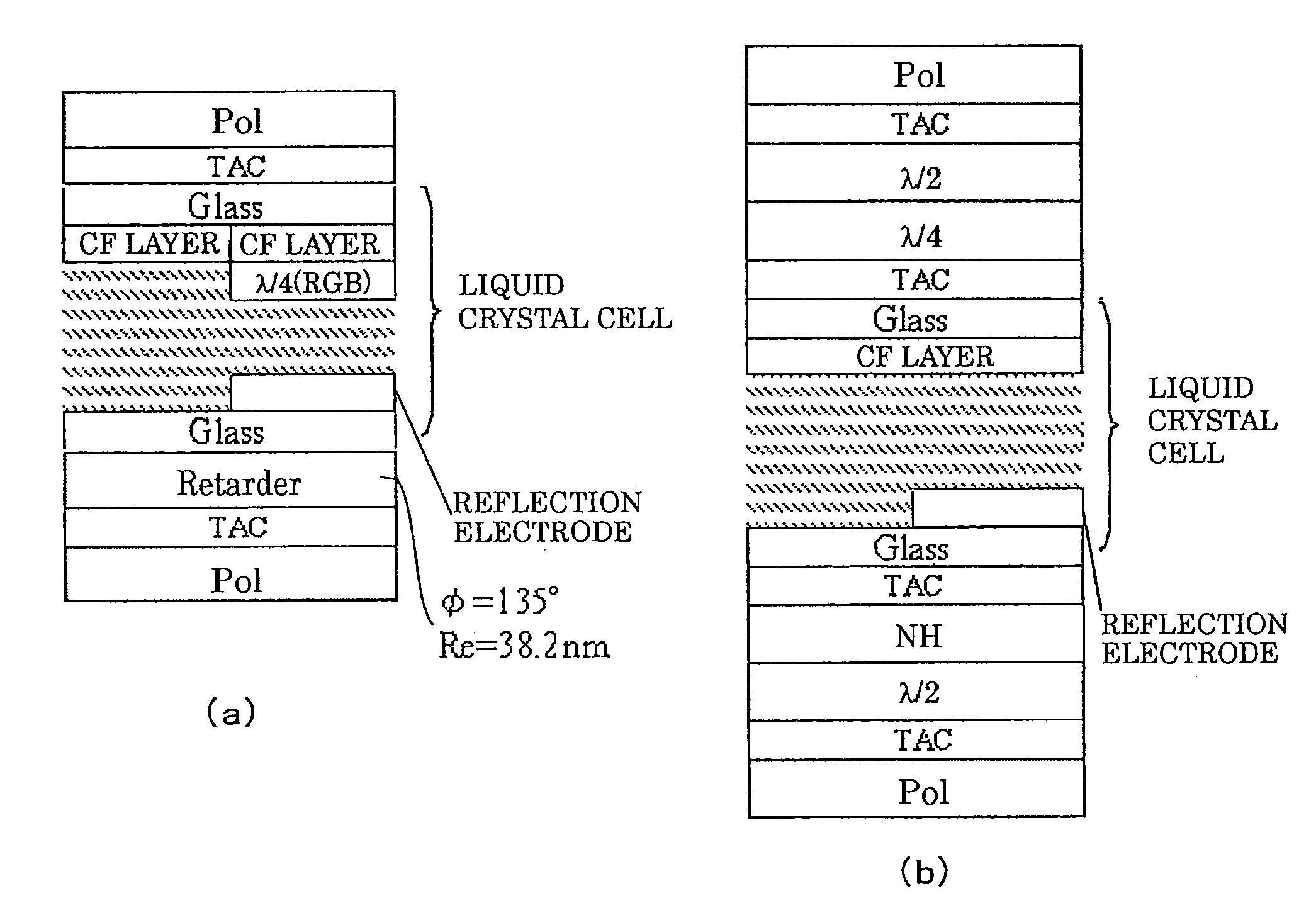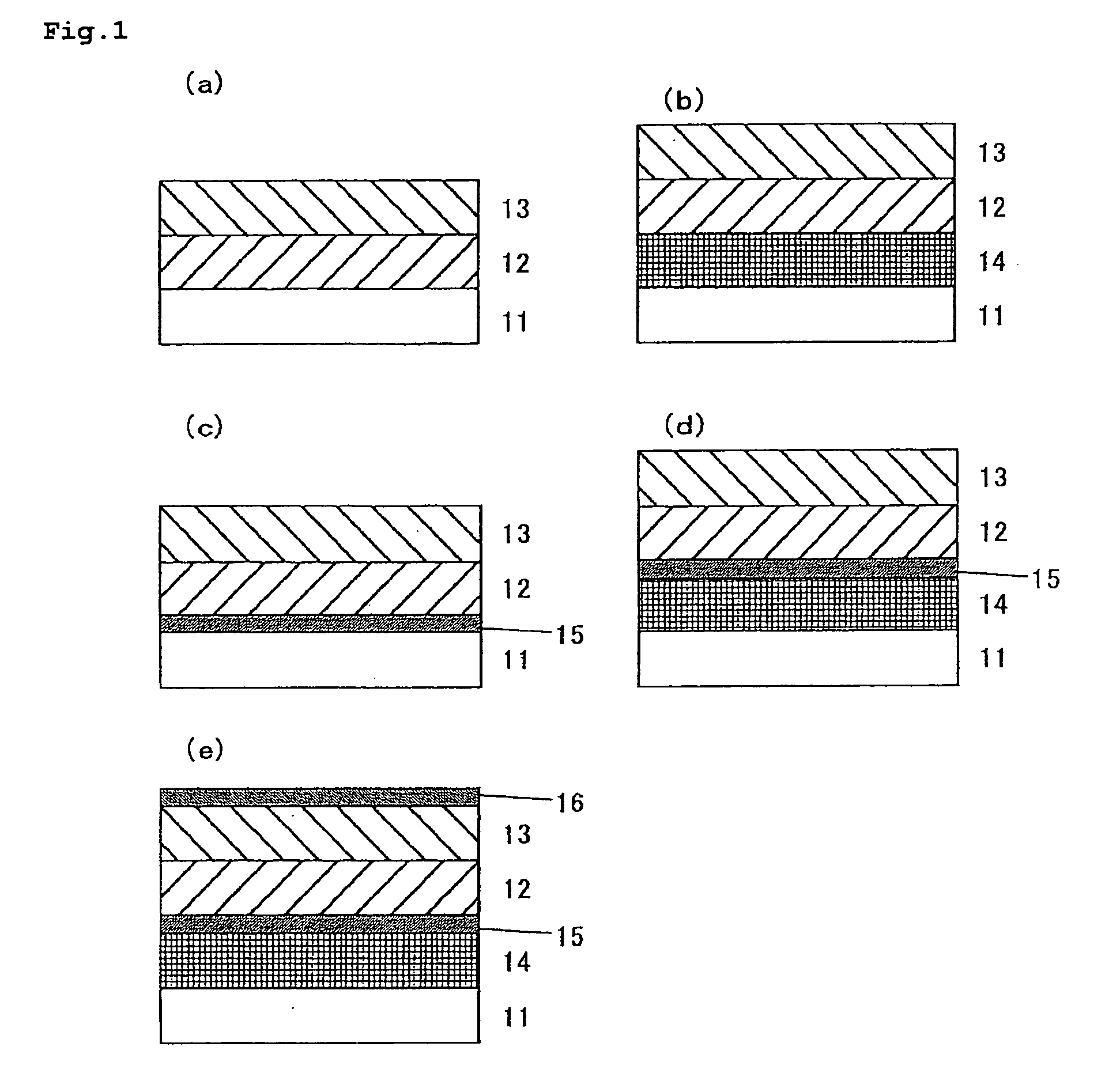Transfer Material, and Process for Producing Liquid Crystal Cell Substrate and Liquid Crystal Display Device Using the Same
- Summary
- Abstract
- Description
- Claims
- Application Information
AI Technical Summary
Benefits of technology
Problems solved by technology
Method used
Image
Examples
examples
[0161]Paragraphs below will more specifically describe the present invention referring to Examples. Any materials, reagents, amount and ratio of use and operations shown in Examples may appropriately be modified without departing from the spirit of the present invention. It is therefore understood that the present invention is by no means limited to specific Examples below.
(Preparation of Coating Liquid CU-1 for Thermoplastic Polymer Layer)
[0162]The composition below was prepared, filtered through a polypropylene filter having a pore size of 30 μm, and the filtrate was used as coating liquid CU-1 for forming an alignment layer.
Composition of Coating Liquid for forming(% byThermoplastic Polymer Layerweight)methyl methacrylate / 2-ethylhexyl acrylate / benzyl5.89methacrylate / methacrylate copolymer(copolymerization ratio (molar ratio) = 55 / 30 / 10 / 5,weight-average molecular weight = 100,000, Tg ≈ 70° C.)styrene / acrylic acid copolymer13.74(copolymerization ratio (molar ratio) = 65 / 35,weight-a...
PUM
 Login to View More
Login to View More Abstract
Description
Claims
Application Information
 Login to View More
Login to View More - R&D
- Intellectual Property
- Life Sciences
- Materials
- Tech Scout
- Unparalleled Data Quality
- Higher Quality Content
- 60% Fewer Hallucinations
Browse by: Latest US Patents, China's latest patents, Technical Efficacy Thesaurus, Application Domain, Technology Topic, Popular Technical Reports.
© 2025 PatSnap. All rights reserved.Legal|Privacy policy|Modern Slavery Act Transparency Statement|Sitemap|About US| Contact US: help@patsnap.com



